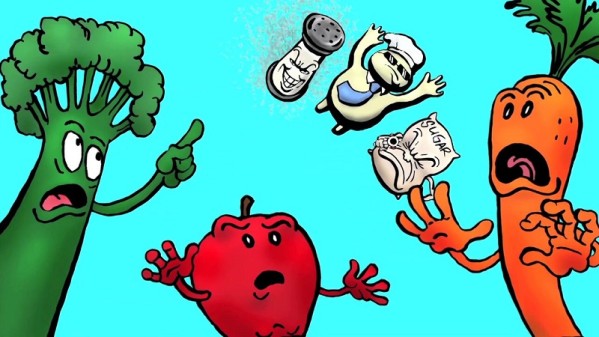
There are two common routes we take when our children take on an undesirable eating habit.
1. React immediately, nip it in the bud and point out that it is unacceptable or
2. Simply ignore in the hope that it will be something they outgrow.
When it comes to a child’s eating habits, I come from the school of thought that nipping something in the bud is far easier than undoing the damage.
We become a little emotional around eating which is why some habits can slip under the radar. If our children refuse something healthy, quite often we will replace it with ‘anything, as long as they eat’. This is how eating the “five food groups”, which in kid terms mean pasta, cheese, yoghurt, bread and juice begins.
Here are some ways to help overcome the most common problems without pressuring or making matters worse.
4 Ways to Improve Your Child’s’ Eating Habits
The Veggiephobe
The one that doesn’t want to go within a kilometre radius of vegetables, this one is kinda hard to break but well worth your perseverance. Kids that eat veggies turn into adults that eat veggies with healthier body weight and overall diets.
There are studies reported that it can take up to 20 tastes of something before kids will accept certain foods so you might think all your efforts are going in vain but it will be worth your trouble. Don’t be afraid to add some olive oil, light margarine or cheese to veggies to make them more appealing. Having fun growing veggie gardens and heading to the fruit market also brings a new element of fun and hopefully an interest in the process.
I really to do believe this is a non-negotiable, and one of the most important issues we can pursue as parents around eating habits.
The Sugarjunky
The first foods our children are usually introduced to are sweet and let’s face it, we all love sweet!! Natural sugars are okay in the form of fruit but it’s when we start eating too many foods that have added sugar, such as sweets and soft drinks, that problems start. Like adults, kids can get on a roll and crave sugary items and sweet usually wins over savoury.
Learn how to read food labels – 4 grams of sugar per serving is equal to 1 tsp of sugar. Keep the sugary items out of the house and set a limit to how much they eat. Treats are a part of growing up but our children don’t need a nightly dessert or daily soft drink. I wrote on how to help your kids kick their sweet tooth in detail.
The Carbonater
Usually, carbonators choices stem from a texture problem, with chewing meat and crunchy vegetables requiring too much effort (seriously!). You will find too many processed carbohydrates like bread and biscuits will lead to a hungry child as these foods are high GI foods and digest quickly. A diet mainly consisting of processed carbs lead to nutrient deficiencies such as low iron and zinc levels.
A way around this problem is to include soft casserole meats, diced finely in a sauce or minced, with processed vegetables. Then you can progress from there. Try also to substitute the carbs with more whole grain options, such as wholemeal instead of white bread, whole-grain biscuits instead of sweet and muesli and whole wheat cereals.
The Juiceaholic
Thirst should be quenched by water, not sweet juices. I have seen this problem and how it can affect food choices and eating patterns. Not only are teeth constantly dosed in sugar but high juice intake can lead to obesity. Drinking juice usually takes the appetite away from eating food and it becomes such an addiction that water just doesn’t cut it.
Try not to go cold turkey, begin by watering down the juice by halves and quarters. Make water fun by adding a straw or a special new cup that only water is allowed in, this might bring excitement to an otherwise plain problem! Keep fruit for times it can be eaten whole. This way you are ensuring maximum nutrition and fibre without overloading their systems. How much fruit is too much?
Anything worth doing doesn’t usually come easily, so do your best. Good health is one of the most important gifts that we can pass on to our children.



